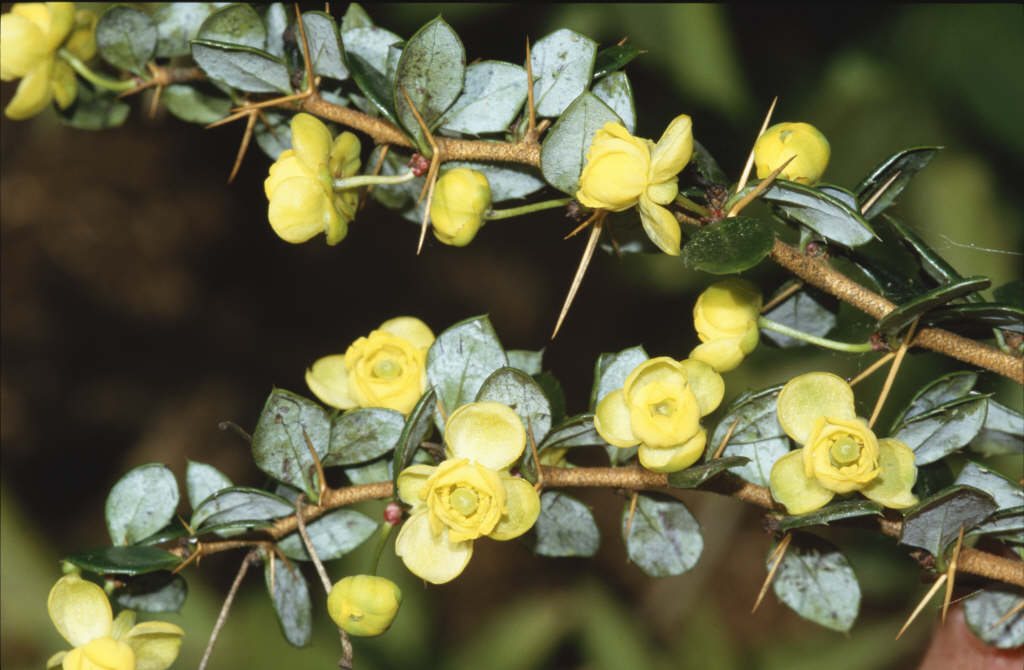Berberis verruculosa
warted barberry
A spiny, rather slow-growing evergreen shrub to about 1.5m tall, with oval leaves, dark shiny green above, white beneath. Solitary yellow flowers 2cm across, produced in late spring, are followed by dark purple, autumn berries with a white bloom
Size
Ultimate height
1–1.5 metresTime to ultimate height
10–20 yearsUltimate spread
1–1.5 metresGrowing conditions
Moisture
Moist but well–drained, Well–drainedpH
Acid, Alkaline, NeutralColour & scent
| Stem | Flower | Foliage | Fruit | |
| Spring | Yellow | Green White | ||
|---|---|---|---|---|
| Summer | Green White | |||
| Autumn | Green White | Black Blue | ||
| Winter | Green White |
Position
- Full sun
- Partial shade
Aspect
South–facing or North–facing or West–facing or East–facing
Exposure
Exposed or Sheltered Hardiness
H5Botanical details
- Family
- Berberidaceae
- Native to GB / Ireland
- No
- Foliage
- Evergreen
- Habit
- Bushy
- Potentially harmful
- Fruit are ornamental - not to be eaten. Wear gloves and other protective equipment when handling. Pets: Fruit are ornamental - not to be eaten - see the HTA guide to potentially harmful plants for further information and useful contact numbers
- Genus
Berberis can be deciduous or evergreen shrubs with spiny shoots bearing simple, often spine-toothed leaves, and small yellow or orange flowers in axillary clusters or racemes, followed by small berries
- Name status
Correct
- Plant range
- W China
How to grow
Cultivation
Tolerant of a range of soils and locations, but grows best in any well drained soil in full sun or partial shade, though flowering and fruiting are best in full sun. See berberis cultivation for further advice
Propagation
Propagate by seed or by semi-hardwood cuttings
Suggested planting locations and garden types
- Coastal
- Cottage and informal garden
- Low Maintenance
- Hedging and screens
- Banks and slopes
Pruning
Pests
May be susceptible to aphids and berberis sawfly
Diseases
May be susceptible to powdery mildews and sometimes by honey fungus
Get involved
The Royal Horticultural Society is the UK’s leading gardening charity. We aim to enrich everyone’s life through plants, and make the UK a greener and more beautiful place.
